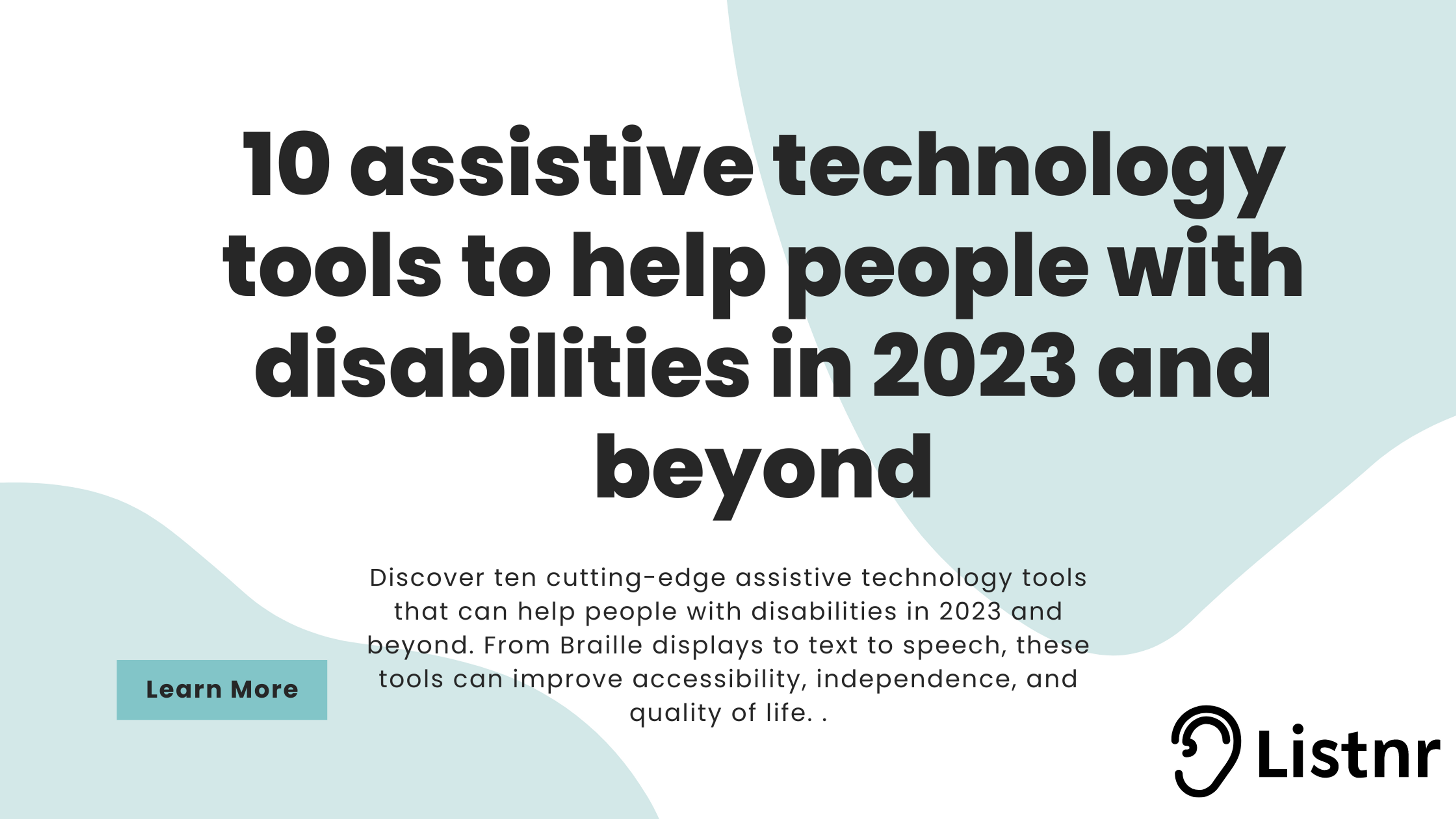Assistive technology is a crucial tool for people with disabilities to improve their lives, increase their independence, and enhance their accessibility to the world. Here are ten assistive technology tools that can help people with disabilities in 2023 and beyond:
1. Braille Display for the Blind
A Braille display is a device that allows blind people or nearly blind people to read by translating text into braille characters. This technology uses a series of pins that raise and lower to form Braille characters. Braille displays can be connected to a computer or a mobile device and are essential for people who are blind or visually impaired.
2. Voice Recognition Software for People with Dyslexia
Voice recognition software is an assistive technology that converts spoken words into text. This technology is beneficial for people with dyslexia, who may have difficulty reading and writing. By dictating their text, individuals with dyslexia can overcome their potential writing deficits and produce high-quality work.
3. Screen Readers for People with Visual Impairments
Screen readers are helpful tools that read the text on a computer screen aloud. This technology is essential for people with visual impairments who cannot read the screen. Screen readers can be customized to read specific words, lines, entire documents or blogs.
4. Text to Speech Software Programs for People with Reading, Visual, or Learning Disabilities
Text-to-speech software programs are tools that convert written text into spoken words. TTS technology is beneficial for people with reading, visual, or learning disabilities who may have difficulty reading or comprehending written text. Text-to-speech tools such as Listnr can be used to read emails, articles, books, and other digital content.
5. Augmented Reality Glasses for People with Low Vision
Augmented Reality (AR) glasses are a type of wearable technology that can enhance the visual experience of people with low vision. AR glasses can provide magnification, contrast, and color adjustments to help people see more clearly. This technology can be especially helpful for people who have difficulty reading or seeing small details.
6. Wheelchair-Mounted Robotic Arms
Wheelchair-mounted robotic arms are assistive technology devices that can help people with mobility impairments perform daily tasks. These devices can be controlled with a joystick or other input device and can be used to pick up and manipulate objects, open doors, and perform other tasks.
7. Smart Home Assistive Technology
Smart home assistive technology is a type of technology that can be integrated into a home to help people with disabilities live more independently. This technology can include voice-activated assistants, smart lighting systems, and other devices that can be controlled remotely.
8. Electronic Mobility Devices
Electronic mobility devices are assistive technology devices that can help people with mobility impairments move around more easily. These devices can include electric wheelchairs, mobility scooters, and other devices that can be controlled with a joystick or other input device.
9. Hearing Aids and Cochlear Implants
Hearing aids and cochlear implants are assistive technology devices that can help people with hearing impairments. These devices can amplify sound and help people hear more clearly, they can super beneficial for people with hearing disabilities.
10. Assistive Technology Apps
Assistive technology apps are software programs that can be downloaded onto a mobile device or computer to help people with disabilities. These apps can include speech-to-text programs, communication apps, and other tools that can improve accessibility and independence.
FAQs:
What Kind of Assistive Technologies Can be Used by People with Disabilities?
There are many different types of assistive technologies that can be used by people with disabilities, including Braille displays, voice recognition software, screen readers, text-to-speech programs like Listnr, augmented reality glasses, robotic arms, smart home technology, electronic mobility devices, hearing aids, cochlear implants, and assistive technology apps.
What is the Difference Between Assistive Technology and Adaptive Technology?
Assistive technology is a type of technology that is designed to help people with disabilities overcome barriers and improve their quality of life. Adaptive technology refers to technology that is designed to adapt to the user's needs and preferences, such as adjustable chairs or keyboards. While there is some overlap between the two, assistive technology is generally focused on accessibility and independence, while adaptive technology is focused on customization and comfort.
By leveraging these ten assistive technology tools, people with disabilities can improve their quality of life and enhance their independence. It is essential to keep up with the latest trends in assistive technology to ensure that individuals with disabilities are not left behind in the ever-evolving technological landscape.

About Ananay Batra
Founder and CEO @ Listnr Inc
